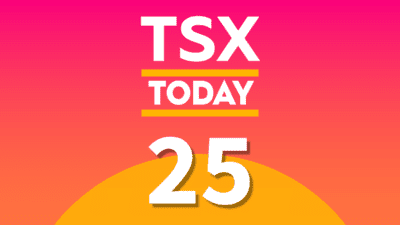In early July 2023, the Canada Revenue Agency (CRA) announced that it would move forward with the introduction of the grocery rebate. This Government of Canada initiative has sought to provide additional financial support to Canadians who have been hammered by food price inflation and rising interest rates.
Today, I want to discuss how I’d look to spend the grocery rebate in the weeks and months ahead. Let’s dive in!
Why the CRA released a grocery rebate this summer
Canadians were already under significant financial pressure coming into this new decade. Then Canadians were hit with the one-two punch of the COVID-19 pandemic and the subsequent surge in inflation. Indeed, the inflation rate in July 2022 hit a stunning 39-year high of 8.1%. In response, the Bank of Canada (BoC) pursued its most aggressive interest rate-tightening policy since the beginning of this century.
The rising cost of food has been one of the key drivers of inflation in 2022 and 2023. This week, Statistics Canada revealed that inflation fell to 2.8% in June 2023. That means that the BoC’s rate tightening finally brought the inflation rate down to its preferred range. Regardless, grocery prices were still up 9.1% annually in the month of June.
Last year, Dalhousie University released its annual Food Price Report. The report projected that Canada would post a 5-7% food price increase in 2023. Foods like vegetables, dairy, and meat would be the biggest upward drivers. Meanwhile, an average family of four was expected to see their grocery bill increase by an average of $1,065.60.
How much can you expect for your grocery rebate?
The dire situation for Canadian consumers inspired the Government of Canada to provide some financial relief. So, who qualifies and for how much?
Canadians would receive the grocery rebate if they were entitled to receive a GST/HST tax credit for January 2023. Moreover, to qualify, you must have filed a tax return for at least 2021. The amount of the grocery rebate is based on your current family situation. A single Canadian with no children will receive $234 if they meet the other criteria. Meanwhile, a married or common-law citizen with two children will have received $467. The maximum you could receive is $628 if you are single or married/common-law with four or more children.
Here is one food stock I’d snatch up with the rebate
Rising food prices should spur Canadians to look at food stocks on the TSX. To close out this piece, I want to target one of my favourites at the end of July 2023.
Maple Leaf Foods (TSX:MFI) is a Mississauga-based company that produces food products in the United States, Canada, Japan, China, and around the world. Shares of this TSX stock have jumped 6.3% month over month as of close on Thursday, July 20. The stock is now up 8.2% so far in 2023.
This company released its first-quarter fiscal 2023 earnings on May 11. The Meat Protein Group delivered sales growth of 5.0% year over year to $1.14 billion. EBITDA stands for earnings before interest, taxes, depreciation, and amortization; it’s a metric that aims to give a better picture of a company’s profitability. Indeed, the Plant Protein Group achieved adjusted EBITDA growth of 60% to a loss of $12.0 million. Maple Leaf expects adjusted EBITDA in the Plant Protein Group to be neutral or better by the end of this fiscal year.
Shares of Maple Leaf are trading in attractive value territory compared to its industry peers. Moreover, the stock offers a quarterly dividend of $0.21 per share. That represents a 3% yield.








